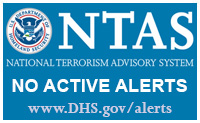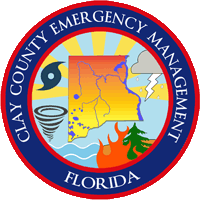[Taken from the The ARES E-Letter for December 16, 2015]
Here are two quotes, which stunned me as much as they should you: “I had no idea what the hams were doing — they were making decisions that were not theirs to make.””The hams never integrated.” The latter may speak to the former, but these quotes come from two distinct organizations, neither having any connection with the other except for this: negative experiences with our amateur service. These same organizations eventually came back to Amateur Radio, both thanks to a refreshing change in leadership, and with an encouraging constant that held through good times and bad: the quality of our average volunteer. I hear it so often and from every organization and agency: “The hams are dedicated. They show up on time, eager to help. They are our best volunteers.”
With people like these, why such dissonance? It’s a leadership issue, but more than this I believe it comes down to individual relationships and a failure sometimes to recognize, communicate, and maintain boundaries.
It’s a whole new ball game nowadays. We’re not on the scene just to erect a few antennas and check in with net control. Our new roles involve working closer with others, understanding and speaking the language of our “client,” doing a lot of communicating long before the event or emergency occurs, and establishing boundaries: Who is responsible for what? How will we handle a particular issue? Who do we report to? Amazingly, time and again, I find these basic questions are never considered by those who allege to lead our teams. It is, I think, the one reason why we sometimes fail.
In our Western culture, boundaries are commonly considered in a negative frame of reference, but in the field of human relationships where we do much of our interfacing in Amateur Radio public service, boundaries build trust and confidence and they simply make everything run smoother.
I was asked to help organize communications services for a small athletic event. It had the typical closed-course, with water stops, a medical tent, and a loosely constructed set of event leadership. I had reservations: no participation was permitted in the pre-event planning. No integration of our service within the event structure was allowed. We were, I was told, “trusted” to do the right thing. This approach, with its cart before the horse, spelled trouble. Horses don’t follow carts very well I thought, and should anything screw up we’ll be on the hook. Still, I pitched in and put it together, but with a very cautious approach. Instead of waiting for the rules, I set them myself, and very conservatively. Just before things kicked off I cornered the event official. In friendly fashion I said, “Our job is to provide instant and reliable communications to support safety and extend your decision-making reach, nothing more. This is your event and you make the decisions.” I think it was the “nothing more” that stuck, plus the open recognition of and deference to his authority. It opened his eyes, and a few doors. Now, several years doing the same event (we didn’t screw up), our roles are expanded, and conversations are finally taking place. I don’t recommend this tactic for every event, and I probably would not do it this way again, but perhaps it helps make the point.
Boundaries are everywhere and must be considered in how we create a communications plan, what’s in the plan, and how it’s executed. But plans are only as good as those who follow along. The ARRL Emergency Communications course training reminds us that our role within the EOC, UCC, or any place where we serve others, is to work as a “team player.” We are encouraged to take orders (in other words, respect and support boundaries), and to understand that doing so is one of the basic expectations. Things become quickly dysfunctional when a volunteer struts about, insecure and lacking internal controls, inside a group that recognizes the vital link between organization and success; teamwork and individual contribution; working within established channels, consistent with the plan.
As a leader, how open are you to understanding, communicating and maintaining boundaries? I encourage you to consider these questions. If uncertain, then ask. If you discover areas of your work that might cross a boundary previously unconsidered, discuss it with those above you in the chain of command. If a volunteer crosses the line, perform rapid correction, then improve training, and refine your volunteer selection, screening, and assignment. Above all, make it your goal as a leader to listen, and to approach your bosses and your teams with a relationship-opening attitude. Replacing “here’s what I will do for you” with the simple question “how may we be of service?” goes a long, long way.
Boundaries — they’re waiting to be better understood, communicated, refined, and maintained. Our Amateur Radio communications service will be all the better for such efforts. – Mark Richards, K1MGY, Littleton, Massachusetts [Richards serves as a member of the Boston Athletic Association Communications Committee, and is a frequent public service event volunteer and organizer. He holds an Extra Class license and is employed in the technical design and product development of hand-held environmental monitoring instrumentation.]




